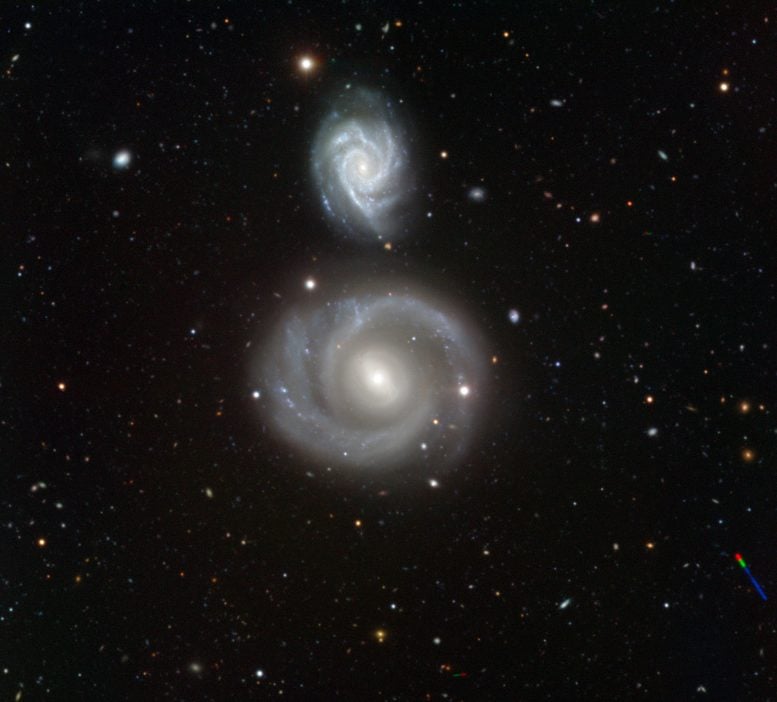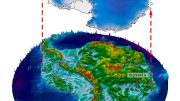Using the FORS1 instrument on the 8.2-meter ESO Very Large Telescope, astronomers captured a new image of galaxies NGC 799 and NGC 800.
This beautiful image portrays the galaxies NGC 799 (below) and NGC 800 (above) located in the constellation of Cetus (The Whale). This pair of galaxies was first observed by the American astronomer Lewis Swift back in 1885.
Located at a distance of about 300 million light-years, our face-on view allows us to clearly appreciate their shapes. Like the Milky Way — our galaxy — these objects are both spiral galaxies, with characteristic long arms winding towards a bright bulge at the center. In the prominent spiral arms, a large number of hot, young, blue stars are forming in clusters (tiny blue dots seen in the image) whereas in the central bulge a large group of cooler, redder, old stars are packed into a compact, almost spherical region.
At first glance, these galaxies look rather similar, but the devil is in the detail. Apart from the obvious difference in size, only NGC 799 has a bar structure, extending from its central bulge, and the spiral arms wind out from the ends of the bar. Galactic bars are thought to act as a mechanism that channels gas from the spiral arms to the center, intensifying star formation. A supernova was also observed in NGC 799 in 2004, and was given the name SN2004dt.
Another interesting differentiating feature is the number of spiral arms. The small NGC 800 has three bright, knotty spiral arms, whilst NGC 799 only has two relatively dim, but broad spiral arms. These start at the end of the bar and wrap nearly completely around the galaxy forming a structure that looks almost like a ring.
While it might seem that this image depicts two impressive close spiral galaxies coexisting in an everlasting peace, nothing can be further than the truth. We could be just witnessing the calm before the storm. We don’t know exactly what the future will bring, but typically, when two galaxies are close enough, they interact over hundreds of millions of years by means of gravitational disturbances. In some cases, only minor interactions occur, causing shape distortions, but sometimes galaxies collide, merging to form a single, new and larger galaxy.
The image was obtained using the FORS1 instrument on the 8.2-meter ESO Very Large Telescope (VLT) atop Cerro Paranal, Chile. It combines exposures taken through three filters (B, V, R).
Five asteroids can also be seen — can you find them all? The asteroids moved between the different exposures leaving colorful streaks in the image.










Took me about a minute but i found all 5…lol